Many readers will remember my Eisner-related post from last year, where I talked about my concern that the Eisners do not take into account the manga that audiences are actually reading. I still think this is a problem — and that by and large, all awards ceremonies are to some extent popularity contests that don’t necessarily take into account the actual value of a work.
That said, this year one of my all-time favorite series, Akiko Higashimura’s Tokyo Tarareba Girls, won the “Best U.S. Edition of International Material — Asia” Eisner, against the works of heavy-hitting male mangaka like Tsutomu Nihei and Inio Asano. To say that I’m ecstatic would be an understatement. For years, I have watched one prestige seinen title after another snag the award — and regardless of the fact that they are certainly all deserving of accolades, it became more and more disheartening to see works by women or about women’s lives falling to the wayside.
The main thing about this win for me is the fact that now more people will know what Tokyo Tarareba Girls is. Many people will pick it up out of curiosity. They will be exposed to a work they wouldn’t have bothered with otherwise, even if only to see what all the fuss is about. And some of them will love it. Sure, there will still be the handful of grumps who don’t understand how “chicklit” won the award, but I like to hope that the vast majority will be impressed by how good it is, and by how they wouldn’t have had any idea if it hadn’t won the Eisner.
I want Tokyo Tarareba Girls to be successful, but more than that, I want works by women and created with a female audience in mind to gain the prominence and prestige of works created for a male readership. I want works that reflect my life and the lives of my women peers to be taken seriously, to not be dismissed as lesser or frivolous.
I want to stop wondering “what if, what if,” and be able to rejoice because the future I have been hoping for — a future where the voices and interests of women, of queer folks, of people of color are acknowledged and uplifted in the comics world — has become a reality.
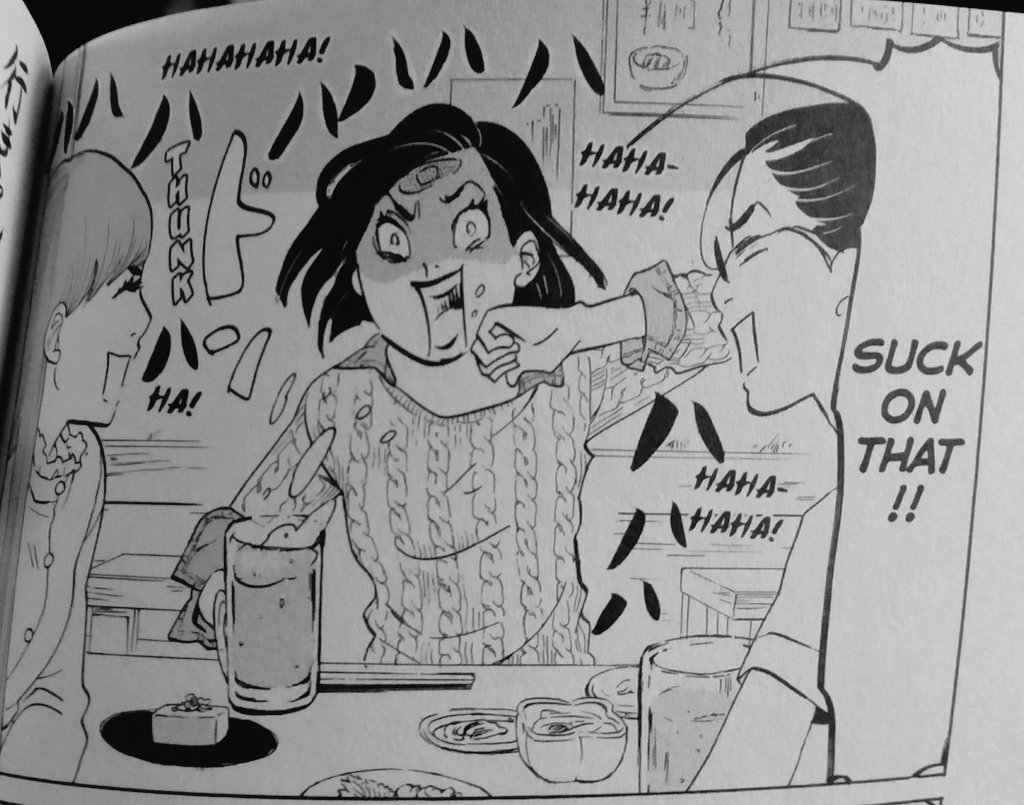
josei manga
March Favorites
It’s finally starting to feel like spring, and I couldn’t be more grateful. It’s so much easier to motivate myself to work when the sun is shining, especially after months and months of frigid winds and gray skies. March is always an odd month, sitting right at the edge of winter and spring, and it often makes me feel unsettled.
After over a month since my sweet kitty Mia’s passing, my husband and I decided we would start the process of looking for new feline companions, specifically hoping to adopt a bonded pair. We absolutely did not expect to adopt on the day we went to the local MSPCA shelter, but of course…the cats had other plans. On March 17th (Saint Gertrude’s Day, the patron saint of cats!), we brought home Zelda and Hilda, a mother-daughter pair of little black cats. They are charming in the extreme, so expect me to gush about them even more as time passes.
On the other end of the spectrum, I’m going to be having my wisdom teeth removed this coming Friday. It’s long overdue, and I’ll be glad once it’s done, but I’m definitely dreading what I’ve heard is a rather painful healing process. But who knows, maybe it’ll afford me more time to read….
Which brings me to the point of this post! Last month I did a round up of my favorite comics reads, and I’m going to go for it again. If I do it twice, it’s a monthly column, right? I actually didn’t read a ton of comics this month, instead favoring some truly indulgent murder mystery audiobooks. But of what I did read, there are a few certain gems that I want to share.
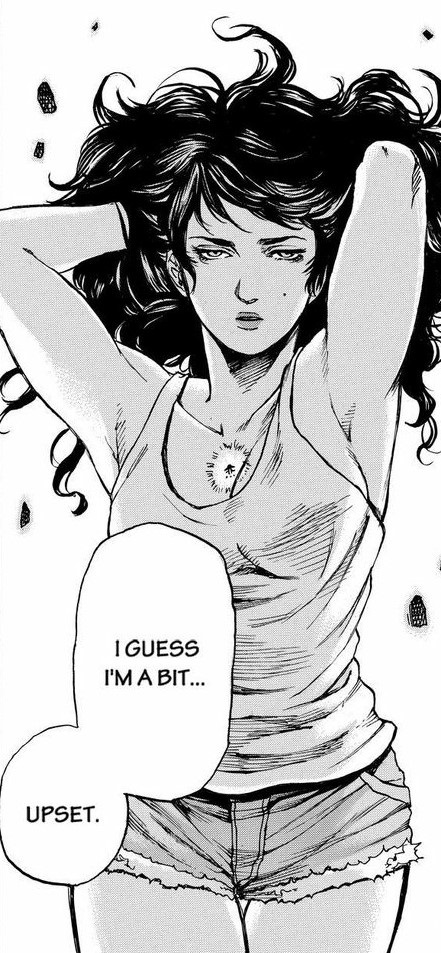
Star Light Woman, by Rie Kanou — available through Crunchyroll
At the start of the month, I decided to sift through the various reading-oriented apps on my tablet to find something new, and I came upon Star Light Woman on Crunchyroll. I was drawn by the image of protagonist Hoshi, rendered in what I think of as an 80s manga style, all puffy hair and cut-off shorts. I’m not sure what I was expecting — maybe a silly, slightly sexy sci-fi romp? And that’s more or less what it is, but somehow I really, really loved it. Hoshi just wants to lead a normal life, but she is the product of an experiment by an alien race to create the perfect weapon to save them from their enemies. She continually has to thwart these aliens while encountering other humans who have undergone similar transformations at their hands. It’s a short little series without much depth, but it’s truly funny and the artwork is stunning. I’m usually very critical of “sexy lady protagonist whose clothes don’t fit properly,” but Hoshi even gets my blood pumping, and I think that her strong, solid frame coupled with her highly moral principles lends a lot to her appeal. She’s like an embodiment of righteous female anger — a subject I’m always eager to see in my fiction!

Memoirs of Amorous Gentlemen, by Moyoco Anno — available through Crunchyroll
I love Moyoco Anno’s work, though I have to admit that this was only the second thing of hers I had ever read. Sakuran was a gorgeous and deeply provocative manga, so when I was scrolling through options on Crunchyroll’s manga app after finishing Star Light Woman, I remembered that I had been meaning to read Memoirs of Amorous Gentlemen for quite some time. I was not at all disappointed, and in fact I read Buffalo 5 Gals immediately afterward, just to get more of Anno’s sassy sex working heroines. But Amorous Gentlemen is special, probably my favorite of Anno’s works thus far. She is incredibly sensitive with sex work while also not over-glamorizing it; Colette and all her co-workers go about their day-to-day business like at any other job, and in many cases care very deeply about their clients. But they also are in close quarters, so they fight and disagree, and sometimes they are all too aware of how they are doomed to this life. The sex scenes are sometimes clinical and sometimes genuinely sexy, and I think that knowing when to evoke which mood in a reader is an incredible skill on Anno’s part. I’m also always going to be a sucker for her very stylized artwork, all angles and frills and fashion.
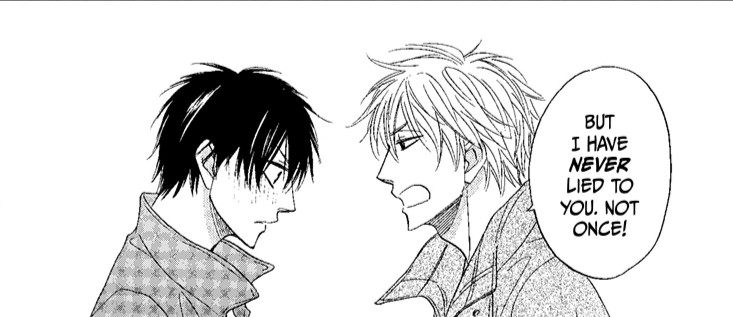
Candy Color Paradox, Volume 1, by Isaku Natsume — published by VIZ Media
The only manga on this month’s list that’s actually new this month, and the only one that has male protagonists! I was able to snag a galley copy of this right before it came out, and I honestly didn’t think it would be anything special. I’ll usually try to read new BL when it comes out, but I’ve been burned so many times with cliched plots or harmful tropes that it’s more a desire to keep up-to-date than an expectation that I’ll find something great. But VIZ’s SuBLime imprint has been knocking it out of the park lately, and I really liked this first volume. Protagonist Satoshi Onoe is a reporter who is proud of his body of work, but one day he is thrown onto a stakeout team with Motoharu Kaburagi, a photographer with a bad attitude whom Onoe believes stole his girlfriend away. The two start off on rough terms, but soon find that they work well together — and they begin to “catch feelings.” You know, that old gem. Honestly, it was cute and fluffy, and I feel like it’s been a long time since I read some straightforward “loathe to like to love” BL manga. The artwork is clean and appealing, with good sense of movement.

Nana, by Ai Yazawa — published by VIZ Media
This month, I decided to embark on a reread of Nana, and I’ve gotten up through volume 7 so far. I honestly don’t remember how much if it I’ve read in the past, so I wanted to make sure I got the full experience. I had watched the anime with my husband many years ago, and it wrecked us both, so coming back to it now, as a woman approaching my thirties instead of a woman barely out of her early 20s, is kind of a weird sensation. I’m farther away from any chance of making rash young adult decisions, but also in a place where I can envy the energy and passion that the characters portray as they lead a dramatic, punk-poverty-chic lifestyle. The series is old now, at least in the timeline of manga, so I don’t feel the need to summarize it, though I may one day write a whole piece about its meaningfulness to me, personally. I remember it didn’t sell great at Comicopia, but it was one of those series that I was adamant about keeping around. Yazawa’s artwork is so strange, with leggy, large-eyed Blythe-doll-esque characters and gorgeous renderings of haute couture of the 2000s, and I’m always enthralled by it. And I genuinely wish there was more work like Nana, work that explored the fraught relationships between female friends who love each other so passionately but don’t have the outlet to express it — an experience that will surely be familiar to many who squashed down their feelings throughout their teenage years for fear of judgment, or just because they didn’t have the tools to recognize those feelings. Society fucks women over, and Yazawa does an incredible job of balancing that message with a lot of genuine sensitivity for two very different women who are desperately reaching for an unobtainable happiness.
So, fluffy BL aside, it seems like I’ve read a bunch of manga about women who are dealing with too many external pressures getting in the way of their desires. That sounds like an appropriate way to have spent Women’s History Month! Honestly, though, my favorite works are often those by women representing the trials of womanhood — not because womanhood is terrible! But because it is cathartic to see your own worries magnified and projected in media sometimes, to see those fears getting played out somewhere safe, allowing you to recognize their validity but also release them in order to achieve your own goals, always knowing that you’re not alone.

My Favorite Reads of 2018
It’s that time of year again, where every single nerd news site tells you what the best-of-the-best comics of the year are. I’m always wary of trying to make blanket statements about literature, but I did want to share a few of my favorites from this past year. I’ve done a LOT of reading, and I feel as though I’ve branched out more than usual (or more like, there have been more titles in Western comics that have appealed to me than there have been in the past).
I didn’t give myself a limit to the number of books I chose, nor any kind of guideline as to theme, tone, etc. I just picked the ones I felt strongly about! These are listed in roughly the order I read them in, and by no means in order of quality. They’re all top-notch, anyway!
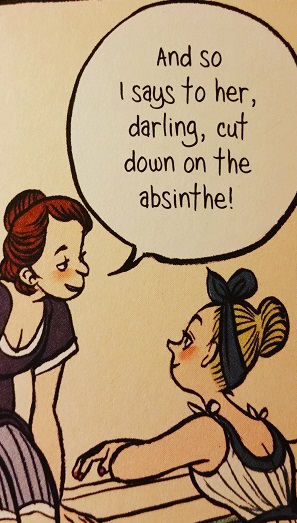
The Prince and the Dressmaker, by Jen Wang
Prince Sebastian has a BIG secret: sometimes he likes to wear dresses and go out on the town as Lady Crystallia. In addition to keeping this part of himself hidden from Parisian society, he has to deal with his parents determinedly seeking out a bride for him. Enter Frances, an extremely skilled seamstress with dreams of fashion design whom Sebastian employs to outfit him for all occasions, public and secret. The story of these two growing together and learning to be their best selves is captured incredibly in Wang’s bright, flowing artwork. Plenty of humor helps to balance out the heart-rending moments that remind the reader to never lose sight of the things that make them unique.
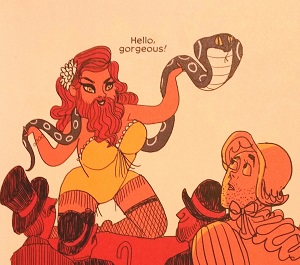
Brazen: Rebel Ladies Who Rocked the World, by Pénélope Bagieu
I genuinely did not expect to adore this book as much as I do. I’m not well-versed in the non-fiction graphic novel, and I’m often suspicious of cheery, pink-emblazoned “girl power” books — not because I don’t believe in girl power, but because it’s hard to encapsulate in one book what it is about womanhood that is so unique. That said, I was truly fascinated and enthralled by the stories that Bagieu, in her whimsical style, has presented in this hefty tome of awesome and awe-inspiring women. Women from all backgrounds, in all types of careers, with differing needs and goals, and with all sorts of romantic entanglements and personal dramas, are presented for the reader with reverence, joy, and good humor.
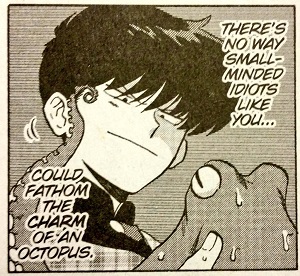
Go For It, Nakamura!, by Syundei
I have been seriously reveling in the increased publication of good, sweet, not-super-fetishistic BL manga this past year or so. In this exquisite example, young Nakamura knows for sure that he’s gay, and also knows for sure that he’s in love with his classmate, Hirose. The problem is, he doesn’t even know how to become friends with Hirose, never mind try to ask him out! Between caring for his pet octopus, perusing questionable BL for romance tips, and just generally trying not to act overly weird, will our stalwart hero ever secure Hirose’s friendship? A familiar story for anyone who was shy in high school, Go For It, Nakamura! uses awkwardness, hilarity, and genuine heart to create a sweet and fuzzy one-shot that will make you yearn for more. Syundei’s artwork is adorable, and very reminiscent of that of manga powerhouse Rumiko Takahashi.
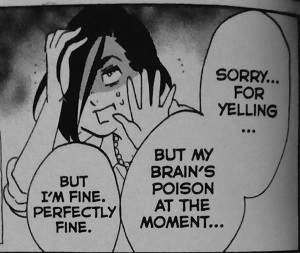
Tokyo Tarareba Girls, by Akiko Higashimura
I wrote about my initial reaction to volume one of Akiko Higashimura’s forays into 30-something woman angst back when the print version first came out. The series is now three print volumes in (with all volumes available digitally), and it has not stopped being maybe the most anticipated title in my pull at work. Higashimura’s ability to poke fun at the stupidity of a woman’s society-bred anxieties while treating the same character with sympathy and understanding is so incredible to me. I often find it hard to articulate what it is that makes this series so good, because it’s really everything. Please…I don’t often make demands, but read Tokyo Tarareba Girls.
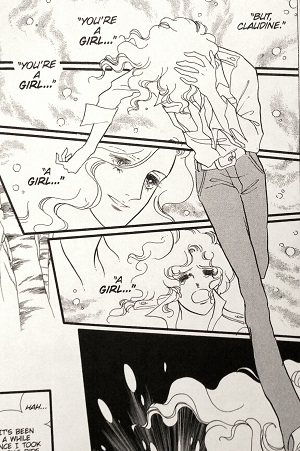
Claudine, by Riyoko Ikeda
I find this manga hard to recommend, even though I love it. It is a quick read; I read it from start to finish on my half-hour bus ride home from work one day. But it is also a dramatic and sad read, in true 70s shojo fashion. Our protagonist Claudine is assigned female at birth, but knows in his heart that he is a man. Even his own father embraces Claudine as more of a son than a daughter, going riding with him and treating him like his older brothers. Society in early 20th century France, however, is not as kind. To the rest of the world, Claudine is a girl, and the tragedy here lies in the outmoded concept that any woman he might love will never lead a fulfilled life with a “woman” partner. So in many ways, this is a fantastic achievement, being a trans story from 70s Japan; but it is also a story about a trans man from the perspective of a cisgender woman, writing at a time when shojo manga was about deep, dramatic personal struggles and utilizing queerness as a vehicle for those struggles. If you can go into it with the understanding that it is a sad story (and yes, I did cry on that fateful bus ride home), it is a simply gorgeous and heartbreaking work of tragedy.
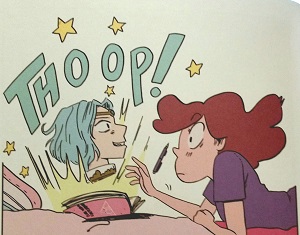
Making Friends, by Kristen Gudsnuk
I’ve been in love with Kristen Gudsnuk’s work ever since I read the first issue of Henchgirl, back when it was released by Scout Comics. Her artwork is fun, her dialogue is funny, and she makes plenty of obvious anime references that I feel are speaking directly to me and my sense of humor. So of course I was thrilled when Making Friends came out, and I was not disappointed. Protagonist Dany is starting middle school, where she is separated from her friends and everything that was familiar to her. She turns inward and begins to draw in the sketchbook she recently inherited from her recently deceased great-aunt. Soon she discovers that anything she draws in the sketchbook — including the head of her favorite anime badboy — comes to life! She quickly devises a plan to create a new, perfect best friend. But as we all know, magic has serious consequences, and Dany is going to have to figure out how to fix the mess she’s made. Gudsnuk does an excellent job of keeping this story about friendship and responsibility from becoming saccharine or tropey, instead treating every character with equal weight and relying on her uncanny knack for coming at a story from a slightly sideways perspective.
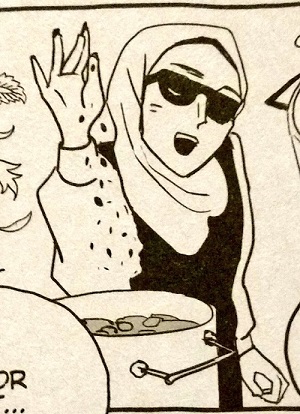
Satoko and Nada, by Yupechika and Marie Nishimori
This was absolutely one of my most anticipated titles of the year, and man oh man did it hit a home run for me. Upon initially receiving it I was uncertain, as it is laid out in 4-koma format, which I usually find cute but not particularly compelling. And yet in this easy gag style, with simple illustrations, Satoko and Nada manages to be a profoundly intimate story of friendship between women and across cultures. Nada is a college student from Saudi Arabia who is looking for a roommate. Satoko, a student in the same school, has recently arrived from Japan and chooses to become that needed roommate. Thus begins this tale of two people from very different backgrounds as they live together and learn all about each other and about their multicultural friends. Warm-hearted, informative, and full of meme references, this manga really surprised me in the best possible way. I want everyone to read it!
(Just an honorable mention here: I reread two of my absolute favorite series this year: Pet Shop of Horrors, by Matsuri Akino, and The Wallflower, by Tomoko Hayakawa. One day, I’d like to write at length about both of these series, but as they’re old and hard to find, I opted against adding them to this list. Look forward to an analysis of them one day, because I am very attached to them both!)
As you can see, I read a lot of very heartwarming stories by or about women this year. I have been immensely impressed by the range in stories and creators I’ve had access to, and that’s something I want to see continue to grow year by year. My reading list has been a bright spot in what has been a very tumultuous year otherwise (personally and in the world at large), and it gives me hope that more differing voices are being tapped to tell more and varied stories.
Looking forward to reading more in 2019!